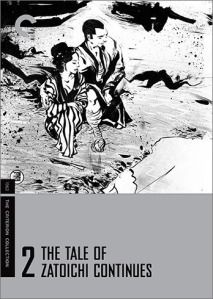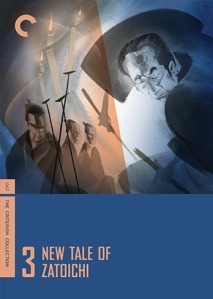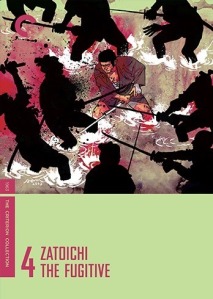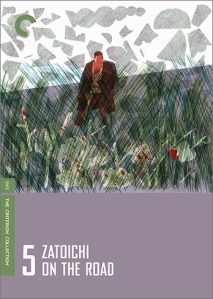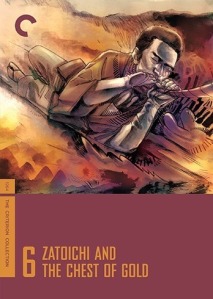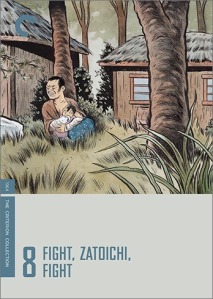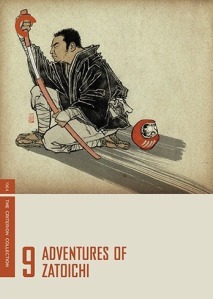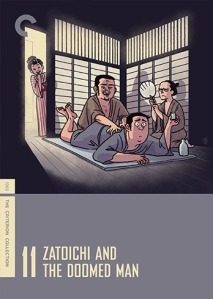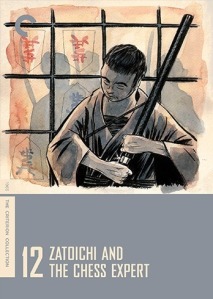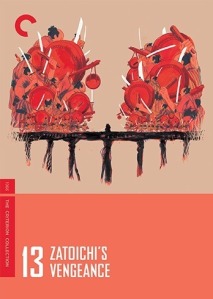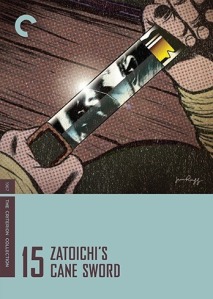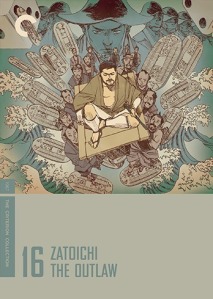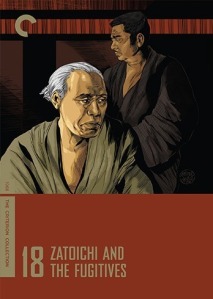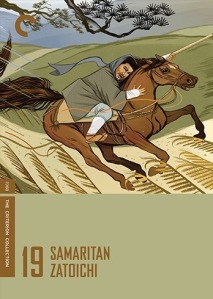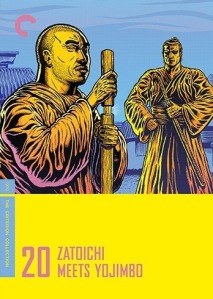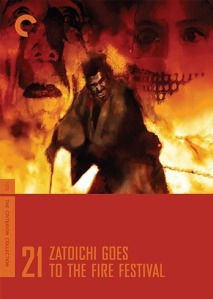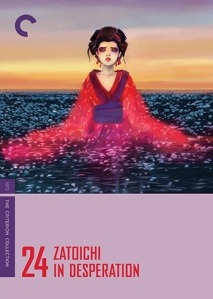Part 1
The Modernization of a Postmodern Humbert: Lolita and American Beauty – Part 2


Where Stanley Kubrick’s film adaptation of Lolita falters and Lyne’s adaptation slightly improves, Sam Mendes’ American Beauty shines brightly. The interior monologue-ness of the novel is nearly erased in Kubrick’s film; while it is improved upon in Lyne’s film with the use of relevant voice-over, it is reimagined in Mendes’ film with the use of dream sequences. The novel’s prose is highly poetic, and, at times, almost lyrical; it brings the reader into the novel and seduces him or her into the stylized web of thinking that is Humbert’s consciousness. From the novel’s beginning, the reader is caught into believing Humbert’s obvious obsession with his prized possession: “Lolita, light of my life, fire of my loins. My sin, my soul. Lo-lee-ta: the tip of the tongue taking a trip of three steps down the palate to tap, at three, on the teeth. Lo. Lee. Ta” (9). Not only is this a way in which Humbert can describe his obsession with Lolita, but it is also a stylistic modality that beautifully forces her name into the reader’s mouth; now the reader can mentally and physically understand the importance of Lolita. Nabokov’s highly stylized diction is entertaining in and of itself, but it also conjures up sympathy for Lolita’s protagonist. Through this prose, the reader can connect—to some degree—with this pedophilic murderer: “You can always count on a murderer for a fancy prose style” (9). One cannot help but connect with Humbert. Furthermore, the intermittent use of French—the language of love—also helps to build a relationship with Humbert, even if the reader does not know the language; it presents the protagonist as a sophisticated debonair, making it difficult to not be seduced. Nabokov’s prose is essential to understanding Humbert’s character; however, it is difficult to translate prose into dialogue, a central means of relating information to the viewer. While voice-over can be effective in reproducing Nabokov’s poetic style and the interior mind of Humbert, as seen in Lyne’s film, it would more than likely be intolerable if used constantly throughout the film. Instead, a filmmaker must decide how to properly convey this style. In “Pistols And Cherry Pies: Lolita From Page To Screen,” Dan Burn states that “[v]isual references function in place of the dense texture of verbal punning and allusion which Nabokov uses throughout the novel” (246). To represent the verbal texture through visuals, as Burn suggests, is a way in which Lolita’s atmosphere and poetic context can be reproduced. Through the use of dream sequences, Mendes is able to replicate Nabokov’s highly sophisticated writing style as a visual surrogate.
The poetic prose Nabokov uses in his novel is reinterpreted in Mendes’ American Beauty as dream sequences, usually involving rose petals. These dream sequences take the viewer directly into the mind of Lester, and so we are able to instantly recognize that this is within his head. This effectively replaces the voice-over (though it is used throughout the film as well), and gives us a visual representation of Lester’s obsession with Angela; visuals, one can argue, hold a greater importance in this medium. The rose petals, a common trope in poetry and literature, come to symbolize Lester’s love and sexual desire, a “represent[ation of] a pleasurable fragmentation (McKittrick 6). However, the rose petals do not just symbolize the sexual desire Lester has for Angela. Carolyn is seen cutting and pruning her roses—demonstrative of their failing relationship and marriage, which is, according to Lester, Carolyn’s fault. Jane wears a rose-covered shirt at one point in the film, which suggests possible incest between Lester and Jane, illustrative of the father/(step)daughter relationship in Nabokov’s novel. Yet, Angela is usually most associated with rose petals. Multiple dream sequences with Lester and Angela contain rose petals in one way or another and easily correlate to the poetic prose of the novel, a visual substitute. One instance in the film that beautifully represents Mendes’ use of a dream sequence is directly after he first encounters Angela:
INT. BURNHAM HOUSE – MASTER BEDROOM – A FEW HOURS LATER
CLOSE on a solitary red ROSE PETAL as it falls slowly through the air.
We’re looking down on Lester and Carolyn in bed. Even in sleep, Carolyn looks determined.
Lester is awake and stares up at us.
LESTER: It’s the weirdest thing.
The ROSE PETAL drifts into view, landing on his pillow.
LESTER (cont’d): I feel like I’ve been in a coma for about twenty years, and I’m just now waking up.
More ROSE PETALS fall onto the bed, and he smiles up at…
His POV: Angela, naked, FLOATS above us as a deluge of ROSE PETALS falls around her.
Her hair fans out around her head and GLOWS with a subtle, burnished light. She looks down at us with a smile that is all things…
Lester smiles back and LAUGHS, as ROSE PETALS cover his face.
LESTER (cont’d): Spec-tac-ular. (Ball)
The sight of Angela has wakened Lester from a twenty-year coma; he is, essentially, reborn. This dream sequence illustrates Angela both as an innocent angel, complete with halo, and as a sexually desirable female. The deluge of petals, falling onto Lester’s body, signifies Lester’s desire for Angela. He smiles and laughs, knowing that he has found a new object of desire, a new obsession that can reactivate his life and be his fountain of youth. Lester, in a very Humbertian way, enunciates each syllable in “spectacular,” just as Nabokov does with “Lo. Lee. Ta” (9). Humbert’s desire for Lolita forces the reader to read her name in a specific manner; likewise, Lester’s reaction to seeing this rose petal-clad young woman forces him embrace and linger on his newfound obsession. Even though this is a vision, Lester is confident and now wishes to include Angela in his life. This dream sequence, one of many, shows Lester’s intense fixation on Angela.
Another dream sequence, which occurs in in the latter section of the film, again illustrates Lester’s desire for and fascination of Angela. The use of rose petals surfaces once more, bringing the poetic quality of Nabokov’s writing back to the forefront. Alan Ball writes:
She reaches inside the refrigerator to grab a bottle. As she does, she moves to place her other hand casually on Lester’s shoulder. He sees it coming. Everything SLOWS DOWN, and all sound FADES…
EXTREME CLOSE UP on her hand as it briefly touches his shoulder in SLOW MOTION. We HEAR only the amplified BRUSH of her fingers against the fabric of his suit, and its unnatural, hollow ECHO…
BACK IN REAL TIME: She grabs the root beer and smiles at him.
CLOSE on Lester: his eyes narrow slightly, then:
He cups her face in his hands and kisses her. She seems shocked, but doesn’t resist as he pulls her toward him with surprising strength. He breaks the kiss, looking at her in awe, then he reaches up and touches his lips. His eyes widen as he pulls a ROSE PETAL from his mouth right before we SMASH CUT TO:
INT. BURNHAM HOUSE – KITCHEN – CONTINUOUS.
Fantasy qualities are apparent within this portion of the text, as seen in the use of slow motion and the “unnatural” aspects of sound and jumping in time These features help set a specific dreamlike atmosphere. The rose petal, as representative of poetic style, reemerges. The petal, however, holds even more significant meaning here because Lester and Angela kiss; as a symbol for sexual desire, and winning Angela’s affections, Lester receives that youthfulness and sexuality that he longs from her. As Kurt Fawver, in his essay “Little Girls and Psychic Fiends: Nabokov’s Lolita as Vampire Tale,” states, it’s “possible that Humbert’s aberrant sexual proclivities are…attempts to drain Lolita’s essence so that he may be spiritually resurrected and renewed” (133). Just as Humbert sucks the blood out of Lolita’s body—“not simply as a dermatological aid, but as sustenance”—a similar representation is presented here with the transference of the red rose petal (Fawver 133). Now that Angela is the trigger for his reawakening, he can, through these physical interactions—though they are solely within his mind—“drain” Angela’s youth and sexual libido. Lester is using Angela in an uncannily similar way that Humbert is using Lolita. He is restoring himself with the aid of his prey. This dream sequence, again, is a visual representation of Nabokov’s prose; his poetic style and the usage of these roses are analogous. That fact that these petals emerge time and again within American Beauty suggests just how deeply rooted Lester is in his obsession with Angela.
The visualization of Nabokov’s poetic prose facilitates Lester’s obsessive thoughts of Angela. Just as the novel depicts Humbert’s initial nymphet obsession—that is, Annabel—Lester’s initial obsession with Angela is just as impactful. Humbert’s obsession with Annabel is taken over by his obsession with Lolita, however, who he sees clearly, almost as if she is a projection on a screen. However, Annabel and Lolita are actually one in the same; much like in Poe’s fiction, Nabokov presents both these characters as dream figures, ciphers for Humbert’s imagination—although they are real entities, they do not fully exist except in Humbert’s mind. Humbert first sees Lolita in a garden, in “a sudden burst of greenery…in a pool of sun” that frames the “half-naked” Lolita (Nabokov 39). Thus, one can immediately connect Lolita to nature, especially when one considers Humbert’s remark to Charlotte Haze’s presentation of her daughter and her lilies simultaneously; Nabokov writes, “‘That was my Lo,’ she said, ‘and these are my lilies,’” in which Humbert responds, “‘Yes,’ I said, ‘yes.’ They are beautiful, beautiful, beautiful!’” (40). Humbert is obviously commenting on Lolita rather than the lilies, but, here, the two bleed together, becoming one in the same. As Paolo Simonetti states in his essay “The Maniac In The Garden: Lolita And The Process Of American Civilization,” the reader, because of this simultaneous presentation, “inevitably associates the garden with Lolita” (155). Painting Lolita as an innocent yet desirable character—almost like Eve in Eden—gives her significance for Humbert and he is immediately entranced. This becomes even clearer when one considers how cinematically Nabokov is writing; his descriptions are fully formed in one’s mind. The effect of meeting Lolita for the first time creates an earth-shattering obsession. Nabokov writes:
I find it most difficult to express with adequate force that flash, that shiver, that impact of passionate recognition. In the course of the sun-shot moment that my glance slithered over the kneeling child…while I passed her by in my disguise (a great big handsome hunk of movieland manhood), the vacuum of my soul managed to suck in every detail of her bright beauty. (39)
Humbert’s fascination and obsession of Lolita is instantaneous. He wishes to drink up every detail of her—in vampiric fashion—which enables him to constantly have a mental picture of her. Humbert is unable to, with “adequate force,” fully illuminate his complete enthrallment with Lolita. The striking “impact of passionate recognition” seen in Nabokov’s novel makes a reappearance in American Beauty where terms of nature—that is, the rose petals—bloom into view.
Lester Burnham’s first encounter with Angela is just as affecting and entrancing as Humbert’s first meeting with Lolita. The metaphoric connection between Lolita and nature rematerializes here; what is even more interesting, though, is that nature is used in a nature-less setting. The use of the rose petals, thus, makes Angela unique in reference to the other individuals in the scene; she easily becomes the focus for Lester and he can imagine her in his own terms. Mendes’ film relocates the action to a gymnasium where, during halftime, Jane, Angela and the rest of the Dancing Spartanettes perform their routine:
His POV: Jane performs well, concentrating. Dancing awkwardly next to her is Angela.
Suddenly Angela looks right at us and smiles… a lazy, insolent smile.
Lester leans forward in his seat.
His POV: We’re focused on Angela now. Everything starts to SLOW DOWN… the MUSIC acquires an eerie ECHO…
We ZOOM slowly toward Lester as he watches, transfixed.
His POV: Angela’s awkwardness gives way to a fluid grace, and “ON BROADWAY” FADES into dreamy, hypnotic MUSIC. The light on Angela grows stronger, and the other girls DISAPPEAR entirely.
Lester is suddenly alone in the stands, spellbound.
His POV: Angela looks directly at us now, dancing only for Lester. Her movements take on a blatantly erotic edge as she starts to unzip her uniform, teasing us with an expression that’s both innocent and knowing, then… she pulls her uniform OPEN and a profusion of RED ROSE PETALS spill forth… and we SMASH CUT TO:
INT. HIGH SCHOOL GYMNASIUM – CONTINUOUS
Angela, fully clothed, is once again surrounded by the other girls. The HIGH SCHOOL BAND plays its last note, the Dancing Spartanettes strike their final pose, and the audience APPLAUDS. (Ball)
Ball, just like Nabokov, writes in cinematic terms. “[M]uch of the film’s mise-en-scène,” such as this first encounter scene, “is devoted to his fantasy of ‘getting’ the adolescent girl” (McKittrick 5). The music changes from The Drifters’ poppy-soul track to that of dreams and hypnosis; again, Lester is completely spellbound by Angela. The crowded stadium becomes virtually empty and Lester becomes the sole voyeur of Angela’s erotic dance, now brightly illuminated in her own pool of sun. Everything begins to slow down and the viewer is able to see how close Lester and Angela symbolically get, even with the vast emptiness surrounding them. In wiping the slate clean—by eliminating the crowd of spectators—Angela becomes Lester’s, at least in his mind. Additionally, one could argue that in eliminating his competition, the budding flower that is Angela can flourish. Likewise, the fact that she is “both innocent and knowing” plays with the concept of seeing her as a part of nature; so, quite expectedly, when she unzips her uniform, “a profusion of RED ROSE PETALS spill forth” (Ball). This scene, as do the other dream sequences, provides the interior monologue aspect from the novel and transplants it into the film. We are able to get a glimpse inside Lester’s head, just as we are able to read Humbert’s thoughts on the page.
Works Cited
American Beauty. Dir. Sam Mendes. Perf. Kevin Spacey, Annette Bening, Thora Birch, Wes Bentley, and Mena Suvari. DreamWorks Pictures, 1999. Film.
Ball, Alan. American Beauty. N.d. Final draft. Dailyscript.com. Web. 1 May 2014.
Burns, Dan E. “Pistols And Cherry Pies: Lolita From Page To Screen.” Literature Film Quarterly 12.4 (1984): 245. Academic Search Complete. Web. 2 May 2014.
Fawver, Kurt. “Little Girls And Psychic Fiends: Nabokov’s Lolita As Vampire Tale.” Notes & Queries 58.1 (2011): 133-138. Academic Search Complete. Web. 3 May 2014.
McKittrick, Casey. “‘I Laughed And Cringed At The Same Time’: Shaping Pedophilic Discourse Around American Beauty And Happiness.” Velvet Light Trap: A Critical Journal Of Film & Television 47 (2001): 3. Academic Search Complete. Web. 2 May 2014.
Nabokov, Vladimir. Lolita. New York: Vintage International, 1955. Print.
Simonetti, Paolo. “The Maniac In The Garden: Lolita And The Process Of American Civilization.” Critique 53.2 (2012): 149-163. Academic Search Complete. Web. 5 May 2014.










